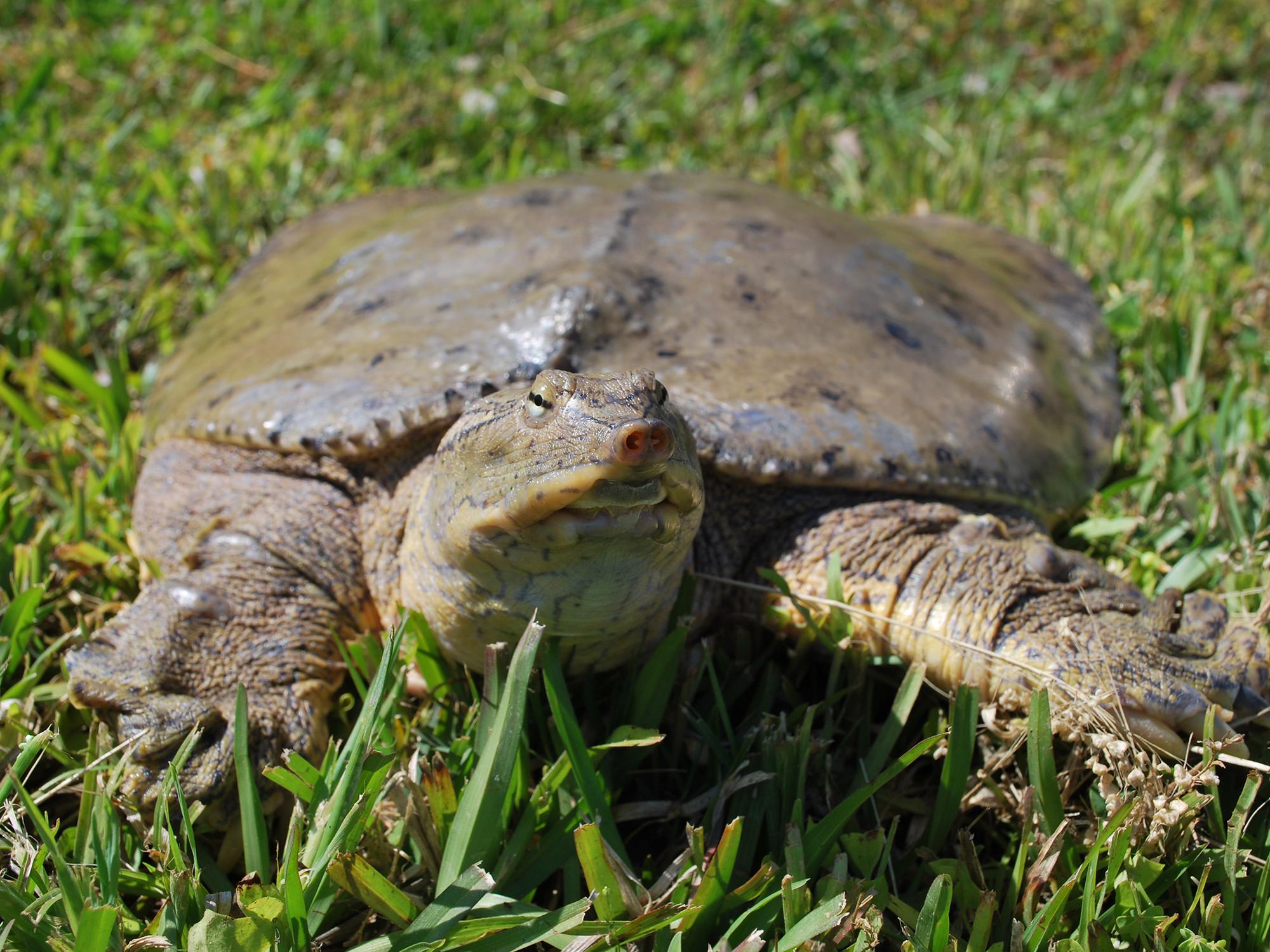Information Possibly Outdated
The information presented on this page was originally released on November 13, 2015. It may not be outdated, but please search our site for more current information. If you plan to quote or reference this information in a publication, please check with the Extension specialist or author before proceeding.
Help! There are turtles in my pond!
Often, the person is concerned that turtles are eating his fish. Sometimes the turtles are eating the pond owner’s fish food. Other times, the caller has caught a turtle while catfishing and does not like dealing with the angry reptile on the end of his line. For one reason or another, turtles have a bad reputation in Mississippi ponds. Well, it is time to set the record straight on turtles!
For the most part, turtles are beneficial to the pond environment. They scavenge dead animal and plant material and remove diseased or weakened fish, contributing to improved water quality and fish population health. Who wouldn’t sacrifice the occasional sick fish for overall better water quality and healthier fish?
I know that turtles can sometimes be a nuisance to pond use and management. They never fail to find a free meal. Turtles will bite natural baits used for fishing, and they are difficult and a little dangerous to unhook.
Turtles also will eat fish left overnight on a stringer. I once left six nice bream on a stringer one evening and woke to find six nice bream heads remaining. Turtles also quickly learn to gather around the fish feeder at feeding time. However, even dense populations of turtles don’t consume a very high percentage of the feed.
The vast majority of my “turtle calls” end with me telling the pond owner it would be best just to leave the turtles alone. However, if you still think that turtles are a genuine problem in your pond because numbers are so high that they interfere with pond use or management, live removal is an option.
Never shoot at turtles. This is dangerous and may be illegal. Bullets can ricochet off water and pose a serious threat to anyone or anything downrange. You also risk shooting an endangered turtle species, which carries heavy fines.
The best way to reduce the turtle population is to trap and relocate them.
First, you will need a permit. The Mississippi Department of Wildlife, Fisheries and Parks’ Museum of Natural Science issues permits for nuisance aquatic animal removal. This permit requires reporting the numbers of turtles removed and their release location. Second, catching turtles is not as easy as it sounds, and many people give up after several ineffective attempts. Third, if you do capture some turtles and plan to relocate them, you had better contact your local conservation officer and let them know of your plans. Otherwise, you risk being stopped with a truckload of turtles of unknown origin and being implicated in the illegal reptile trade.
Further, you should consider the consequences of relocating turtles. First, these animals will suddenly find themselves in a new, unfamiliar environment. They will have no knowledge of feeding areas or loafing areas, and they will not know how to escape predators. There will most likely be an established population of turtles already there, so food resources will become limited, possibly affecting both newcomers and residents alike. You may also unknowingly spread turtle diseases from one population to the next. And if the turtles do survive, you may have created a turtle problem for someone else.
Of course, trapping turtles is a never-ending endeavor. More turtles will continuously colonize the pond. It is, after all, what they do. A small, 1- to 2-foot-high barrier around the pond can help prevent turtles from reaching the water, but that can be expensive to construct and it reduces the esthetic value of the pond. It may interfere with mowing and pond use. In almost all cases, it is best to learn to enjoy your turtles as part of the natural pond system.

Editor’s Note: Extension Outdoors is a column authored by several different experts in the Mississippi State University Extension Service.







